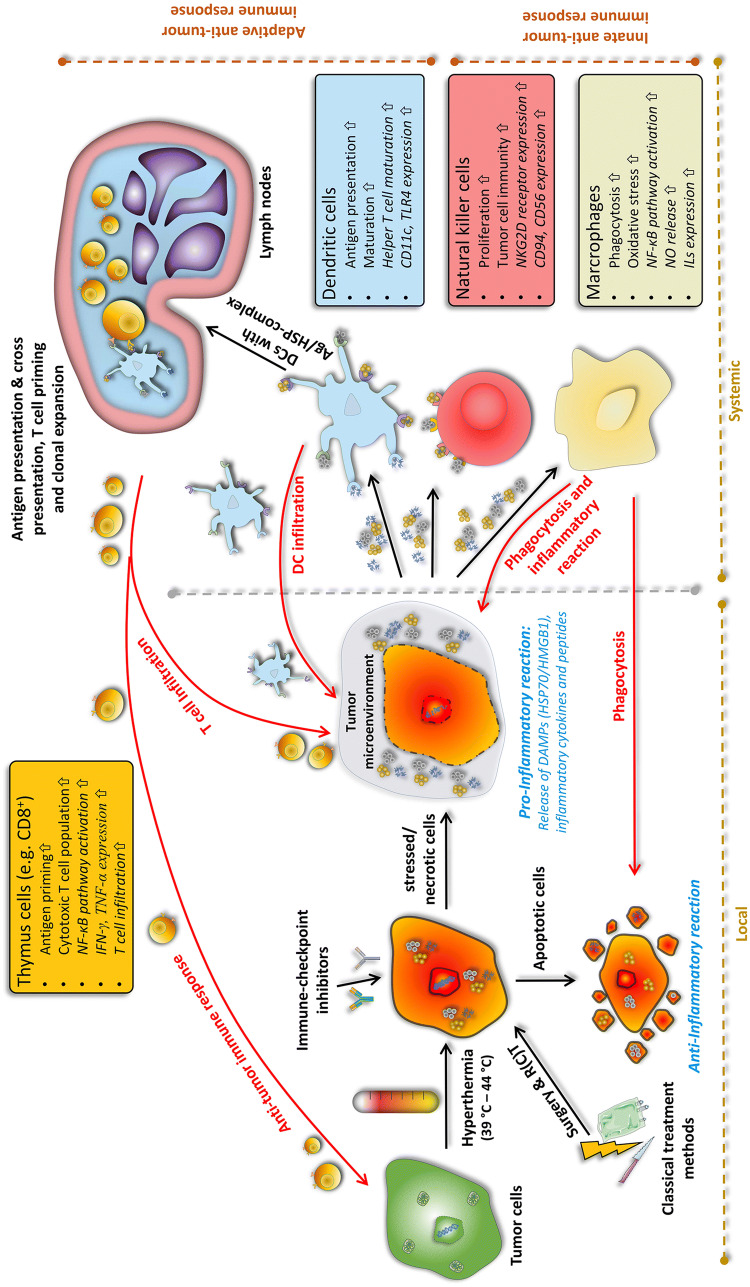Fig. 1.
Induction of anti-tumor immune responses by multimodal treatment settings consisting of the classical tumor treatments (surgery and radio(chemo)therapy) combined with immune modulators such as immune checkpoint inhibitors and/or hyperthermia. Depending on the temperature, hyperthermia is capable of inducing both, apoptotic cells and necrotic cells, respectively. Primarily necrotic cells release danger-associated molecular patterns (DAMPs) and inflammatory cytokines into the tumor microenvironment. Dendritic cells (DCs) take up tumor antigens and tumor antigen–DAMP complexes and cross-present it to T cells in lymph nodes. This leads to T-cell priming, clonal expansion, and finally an adaptive anti-tumor immune response against the tumor. Additionally, DAMPs and cytokines can also directly activate natural killer (NK) cells or macrophages as parts of the adaptive immune system. Generally, hyperthermia has several stimulating mechanisms on immune cells, as shown in the colored boxes

